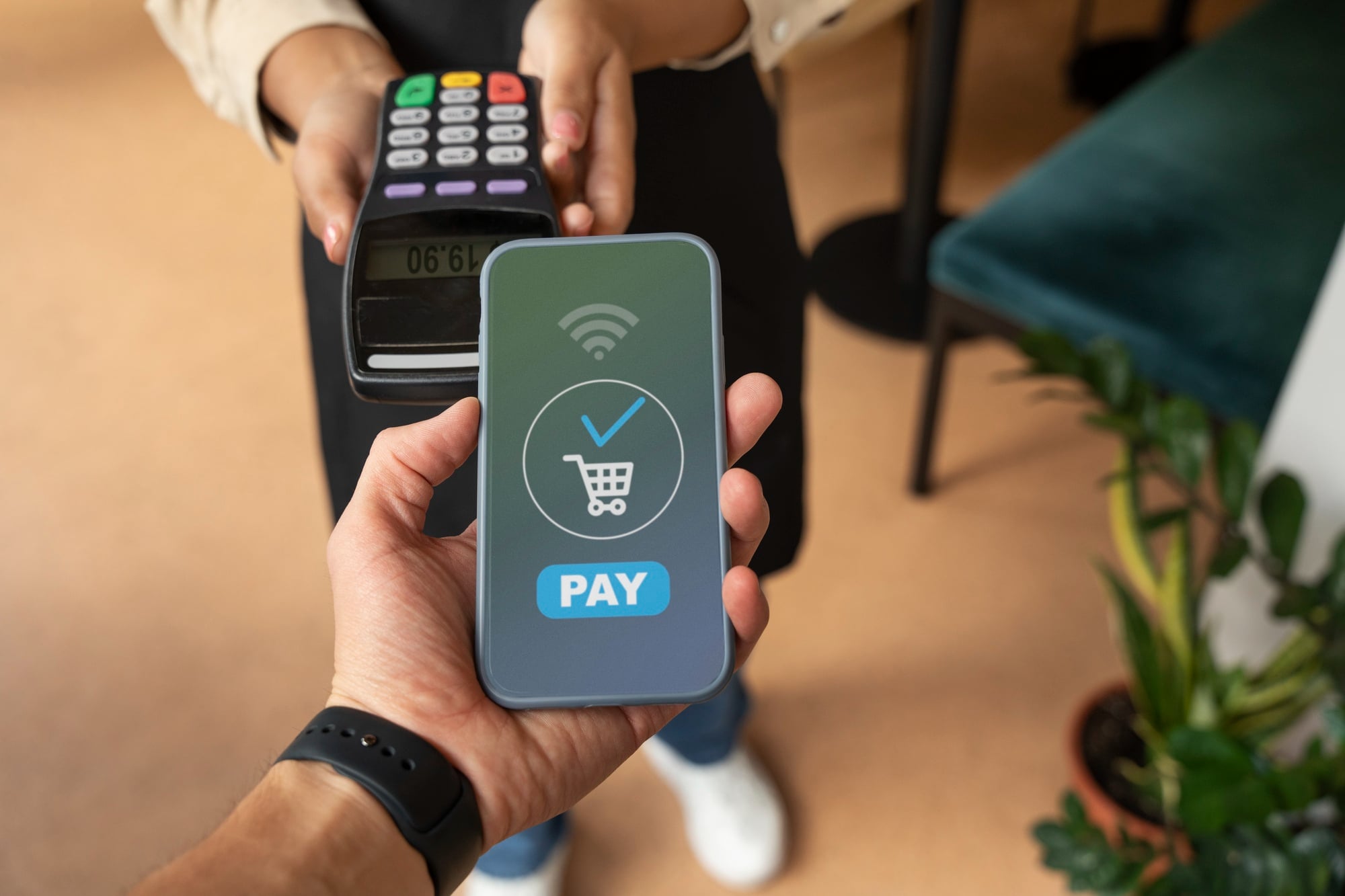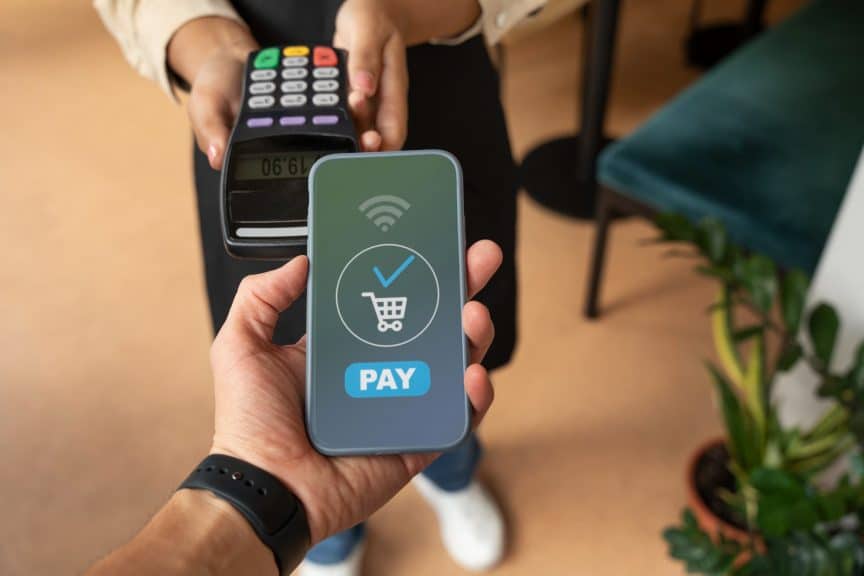
Image by Freepik
Neobanks target the young with low fees and convenience.
Neobanks are companies whose mobile apps provide you with a way of paying your bills, saving, and tracking your spending activity, all from your phone. They attract customers because their online apps are easy to use, convenient, and the charges are low.
Neobank companies have no physical branches or buildings you can visit. Their apps give consumers a lower-cost alternative to traditional banks. Generally, they are geared toward people who do not need banking services beyond simple savings and checking accounts.
Other names used for neobanks, mostly in the UK, are challenger banks and online-only banks, app-based banks, or digital banks.
Fewer traditional branches
Traditional banks learned that a growing number of people want simple, easy access to their bank accounts. For this reason, they added online banking to the services they offer.
Subsequently, as more people choose online banking over the ‘park the car and go inside’ model, many local bank branches have closed in order to reduce overhead costs.
In fact, between 2015 and 2022, more than half of the UK’s bank branches shut permanently, according to Which.co.uk.
In the US, the number of bank branches has been steadily decreasing since 2011, with a huge uptick in closures during COVID-19 restrictions. The swelling rate of closures continues today.
Differences between neobanks and traditional banks
Online banking offered through a traditional bank is not the same as a neobank account.
First, the digital experience can be quite different.
The digital platforms used by neobanks are designed for only their primary purpose. On the other hand, traditional banks usually have to add the mobile app access and services on top of their existing configurations. Consequently, their apps can be less user friendly than the neobanks’.
Second, most neobanks are not actually banks.
Unlike traditional banks, most neobanks aren’t actually chartered as banks with state or federal regulators. Nor are they audited by banking examiners.
Conversely, traditional, chartered banks must show that they have enough money for bank operations, growth, and potential risks. They also must submit strategic plans for products, potential problems, and projections on how and when the bank will profit.
On account of being unchartered, many neobanks partner with chartered banks so their customers’ deposits are insured by the Federal Deposit Insurance Corporation (FDIC).
Similarly, the Financial Services Compensation Scheme (FSCS) provides this insurance for banks in the UK.
Third, neobanks often do not provide a full range of products.
Traditional and online banks provide their customers with support services and banking products including checking and savings accounts, certificates of deposit (CDs), investments, and loans.
In contrast, neobanks have not offered much beyond paying and saving. However, as neobanks compete for customers, they are venturing into offering other services. These include online credit cards, micro-investment, wealth management, peer-to-peer transfers, loans, and insurance.
Fourth, neobanks have no physical branches.
Neobanks have no building or staffing costs. Consequently, they can offer cheaper services.
Chase CEO Jamie Dimon points out that neobanks are not subject to the many regulations and costs associated with running a big bank, which gives them an edge.
Types of neobanks
There are two types of standalone neobanks: a full-stack neobank and a front-end focused neobank.
A full-stack neobank is a standalone bank with its own banking license and can operate completely independently.
Alternatively, a front-end focused neobank does not have its own banking license and must operate in partnership with either a traditional bank to provide its services to customers. These are also called ‘white label’ neobanks.
The rise of neobanks
The first neobanks — originally called ‘challenger banks’ in the UK — gained popularity after the 2007-09 banking crisis. At that time, they were marketed as an alternative to traditional banks, with low rates and greater transparency.
Then, digital finance got a big boost in 2020 because of the pandemic where people had to do their banking online.
Today, neobanks are providing users the ability to perform payments anytime, from any location, and in various currencies.
In an interview, Jayesh Patel, CEO of Wio Bank, states that the rise of neobanks is driven by two main factors: changing consumer behavior and technological advancements.
Customers today expect instant access to financial services and a seamless user experience. They want to be able to open accounts, apply for loans, and make payments on their mobile devices, without having to visit a physical branch. This demand for convenience and speed is driving the shift toward digital banking.
At the same time, technological advancements have made it possible for startups to enter the market with lower overhead costs than traditional banks.
Younger Users
Purposefully, neobanks incorporate eye-catching branding and budgeting tools to appeal to younger customers.
Indeed, many neobanks also offer services for people under 18, with interactive features to help teenagers learn about money management.
“A young person that doesn’t ever want to use a physical bank location and wants to conduct all their banking services on their smartphone is best suited for a neobank,” says Anthony Chan, former chief economist at JPMorgan Chase.
The advantages of neobanking
The advantages of neobanking are very attractive to certain customers, including travelers and expats.
There is never a time when you can’t access your account. Neobanks are always operating, in all time zones.
As mentioned, fees are lower than traditional banks. Additionally, they may allow you to use your card abroad without any fees for overseas use.
Budgeting tools are usually a leading feature of neobanks. For example, depending on the particular neobank, you may be able to get a detailed breakdown of your monthly budget, keep track of your spending, and create specific savings plans.
Additionally, some neobanks can alert you to spending notifications you’ve set.
One popular neobank, Revolut, allows its customers to store money as cryptocurrency. It also targets travelers and expats by offering real-time exchange rates.
The disadvantages of neobanks
Users are unable to make cash withdrawals and deposits due to the absence of physical bank branches. While most people don’t use checkbooks anymore, for those who do, neobanking will not work for them.
Although neobanks can have customer service built into the app, it tends to be instant messaging services with an assistant, or may stretch to a phone call. There is no face-to-face opportunity for discussion.
While neobanks can offer you most day-to-day banking services, cash deposits, investment options, or loans may be out of the question.
How they make money
Most neobanks make money from interchange fees. These are the fees a merchant pays every time you tap your card or make a transaction.
Also, because neobanks are smaller operations than high-street banks, they can charge higher interchange fees.
Is neobanking here to stay?
We’ll see.
Neobanks are venture capitalist-backed. Most of the world’s neobanks have not been able to turn a profit and investors are losing patience.
“It’s hard to imagine that venture capitalists will continue to fund an infinite list of neobank startups planning to go after increasingly smaller market segments with interchange-reliant revenue models,” says Forbes’ Ron Shevlin.
Consequently, with funding drying up, 2023 is shaping up to be a do-or-die year.
After pumping up overall account opening rates, neobanks’ marketing budgets were spent. Then, incentives for new customers disappeared. Of course, this caused a slowdown in account opening rates.
Another concerning factor for neobanks’ futures is that only about half of neobank account holders use the neobank account as their primary account, according to Cornerstone research published by Forbes.
Put another way, some people use a neobank to keep track of their monthly budget, but stick with a traditional bank for investments and larger savings, for example.
“Expect low growth ahead,” says Shevlin. He predicts that the Compound Annual Growth Rate (CARG) of new account openings from 2022 to 2026 will be under 1%.
A contrasting view
However, other experts are optimistic about neobanks’ future. For instance, Insider Intelligence forecasts that the number of US neobank account holders will grow 46.4% between 2022 and 2026.
To be sure, increased consumer interest in swapping out cash and credit cards for financial service mobile apps is stimulating competition globally. As a result, neobanks are rolling out features like overdraft protection and sign-up incentives.
The neobank target audience, Gen Z, includes those born between 1997 and 2013. With more than 2 billion people, Gen Z accounts for 30% of the global population.
Importantly, this group has grown up in the digital world and expects the technological convenience neobanks offer.
One of the biggest tech brands in the world, Apple, is betting on neobanking. It has partnered with Goldman bank to offer a high-interest savings account. Apple is essentially making its more than two billion iPhones serve as Goldman’s mobile branch network.
See also:
High Interest Savings Account Debuts
U.S. Dollar’s Global Dominance on the Decline
Aisa International
Aisa International, s.r.o. is a wealth management firm with an award-winning team who provides investment advice, financial planning, and asset management for U.S., U.K., and E.U. expatriate citizens residing abroad. Holding all current regulatory licenses, including the FCA license in the UK and the Investment Licence in the European Union, Aisa International is uniquely qualified to provide personal financial advice for U.K. pensioners living outside of the U.K. Headquartered in Prague, Czech Republic, Aisa International serves its global clients where they reside through its OpesFidelio network of highly-qualified advisors. For more information, please visit www.asiainternational.cz.
Please Note
The views expressed in this article are not to be construed as personal advice. Therefore, you should contact a qualified, and ideally, regulated adviser in order to obtain up-to-date personal advice with regard to your own personal circumstances. Consequently, if you do not, then you are acting under your own authority and deemed “execution only”. The author does not accept any liability for people acting without personalised advice, who base a decision on views expressed in this generic article. Importantly, where this article is dated then it is based on legislation as of the date. Legislation changes but articles are rarely updated, although sometimes a new article is written; so, please check for later articles or changes in legislation on official government websites, as this article should not be relied on in isolation.
Related Stories:
- High Interest Savings Account Debuts
- The Rise of the Cash-Only Lifestyle Amid Bank Failures
- Financial Challenges of Moving Abroad
- Are European Banks Really Stronger Than Their U.S. Rivals?
- National Savings and Investments (NS&I)
Share this story



